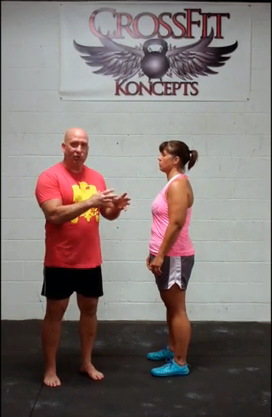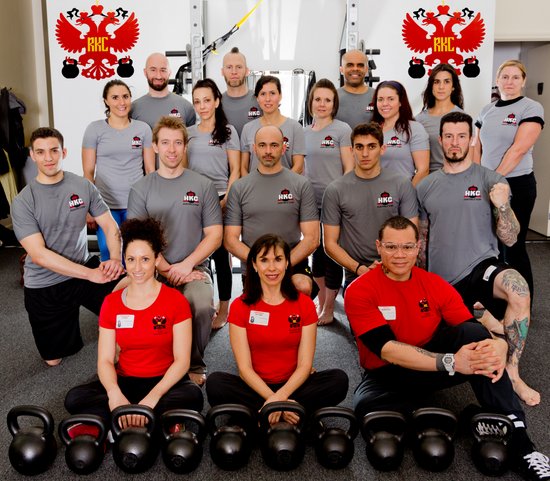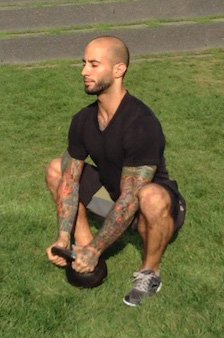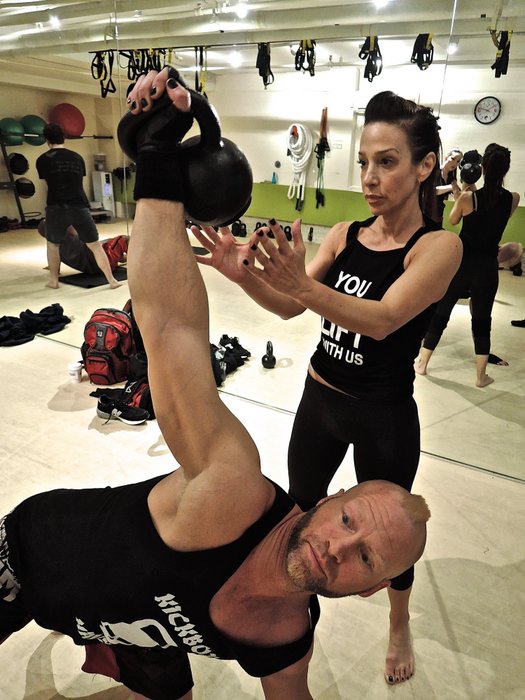
Sometimes, when I repeat the same answer to a question more than a few times, I begin to wonder why people even ask me questions.
Exercise for Fat Loss?
“Swings, goblet squats and Turkish get-ups.”Elderly clients?
“Swings, goblet squats and Turkish get-ups.”Travel related issues for elite athletes and collision occupations?
“Swings, goblet squats and Turkish get-ups.”
Most people come to coaches and trainers wanting a magic wand treatment, Harry Potter and the Six Pack Abs, but what they NEED is hip flexor stretching, t-spine mobility, rotary stability and basic movements. They NEED to move. They NEED to open the hips and spine and shoulders.
They need the information from the HKC.
I have spent my life trying to understand weightlifting. It seems to me that there are three important keys:
- Fundamental Human Movements
- Reps and Sets
- Load
Sadly, I think this is the correct order that we should approach weightlifting. First, we need to establish the correct postures and patterns, then work around reasonable “numbers” of movements in a training session. Finally, we should discuss the load. Sadly, the industry—and I am guilty of this as well—has switched the order and made a 500 pound deadlift the “answer” to improving one’s game or cutting some fat.
And, please note, I said “training session.” Oh, I can work you out:
“Hey, go run to Peru!”
“Hey, go do 50,000 burpees.”
“Hey, go swim to Alaska.”
But, please don’t think any of that is going to improve your skill set or your long term ability to do anything from sports to simply aging gracefully.
At the HKC, we learn what I consider to be the key patterns to human movement: the swing, the goblet squat and the get-up. The “Hip Displacement Continuum” (HDC) is a term I invented to discuss hip movement. The HDC has two ends: the swing and the goblet squat. The swing demands maximal hip hinge and minimal knee bend while the goblet squat demands maximal hip hinge along with maximal knee bend.
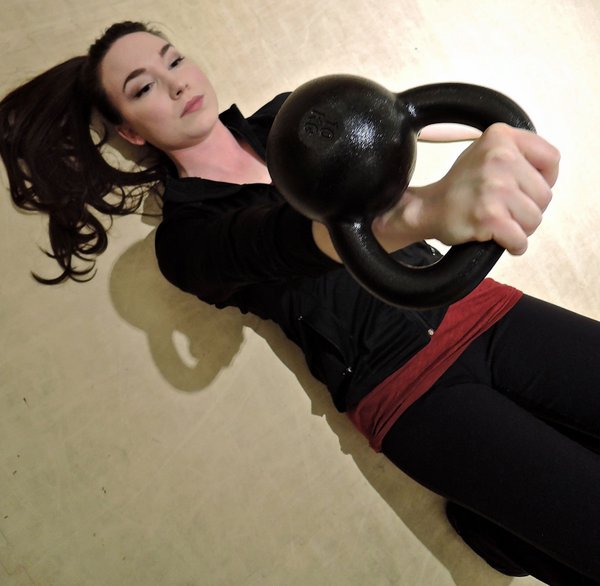
They are the same—but different—in their ability to remind the body of the most powerful movements it can perform. The get-up (not the “Turkish sit-up” as I often note) is a one-stop course in the basics of every human movement from rolling and hinging to lunging and locking out.
So, the HKC covers basic human movements in a way that is unlike any other system or school. As I often argue, add the push-up and, honestly, you might be “done.” Here are the basics of proper training:
- Training sessions need to be repeatable.
- Training sessions should put you on the path of progress towards your goals.
- Training sessions should focus on quality.
So what it the key to quality? I have a simple answer for most people: control your repetitions.
In teaching the get-up, or when using this wonderful lift as a tool to discover your body, keep the reps “around” ten. Now, you can think about this as a total of ten with five on the right and five on the left, or you can try ten right and ten left. But, please don’t make a war over the numbers. Do the get-ups, feel better and move along.
I have noted that if I do get ups as part of my warm up along with some get up drills for “this or that” (the highly technical name I use for correctives), I am sweating and pushing into a “workout” around ten total reps. Certainly, at times you can do more. But, week in and week out, think “around” ten reps for the get-up.
The goblet squat seems to lock in around 15-25 reps per workout. I offer you the “Humane Burpee” as a way to try this concept:
10 Swings
5 Goblet squats (put the bell down between your feet under control)
Inchworm out to the push-up position (walk on your hands)
5 Push-ups
Inchworm back to starting position
10 Swings
4 Goblet squats (put the bell down between your feet under control)
Inchworm out to the push-up position (walk on your hands)
4 Push-ups
Inchworm back to starting position
10 Swings
3 Goblet squats (put the bell down between your feet under control)
Inchworm out to the push-up position (walk on your hands)
3 Push-ups
Inchworm back to starting position
10 Swings
2 Goblet squats (put the bell down between your feet under control)
Inchworm out to the push-up position (walk on your hands)
2 Push Ups
Inchworm back to starting position
10 Swings
1 Goblet squat (put the bell down between your feet under control)
Inchworm out to the push-up position (walk on your hands)
1 Push-up
Inchworm back to starting position
Finished!
That’s 50 swings, 15 goblet squats and 15 push-ups. 8-5-2 will give you the same results with less swings, if you need to do less (Only 30!).
One of the great insights, among many, that I picked up at the RKC is the idea of doing twenty swings with one kettlebell and ten swings with two kettlebells. After doing literally hundreds of swings a day, I noted that my technique held up fine in that ten and twenty range. It is the basic teaching of sports: don’t let quantity influence quality. In other words, ten good reps is far better than dozens of crappy reps. If you want more volume, just do more sets.
Absolutely, there are times when you should do more than twenty. There are times when you want to do all kinds of things. But, most of the time you just want to keep moving ahead. I usually call these the “Punch the Clock” workouts and I think they are the key to staying in the game.
So, you may ask, is this enough?
Over time, yes!
Tim Ferris, RKC-II, tells us in his excellent book, The Four Hour Body that there is a minimum effective dose (MED) of everything fitness related. Although the number I am about to share has a bit of wiggle room, it seems that 75-250 swings a day is the “wheelhouse” for the swing MED. Yes, you can do more, but you want to be able to do it literally day in, day out, year in and year out.
Finally—and don’t take this as a joke, I mean it—if it is too light, go heavier. And, if you went too heavy, try a lighter bell. Doing the little “Humane Burpee” with a big kettlebell is a killer workout. But, it is simple to scale it up or down by simply changing the kettlebell, it’s that simple. When you look at movement first, then reps, then for whatever reason, the loading makes more sense too.
This is the essence of the HKC and I love it. In a one-day course, we learn and do (a lot of “do”) the three core movements of the kettlebell world.
Prepping for the HKC is not as complex or deep as the three-day RKC. Showing up “in shape” and ready to learn would be ideal, but I would also recommend include some additional mobility work and perhaps some work on the hinge, squat and some basic rolling to prep for the event.
The time you spend prepping for the event pales in comparison to what you do AFTER the HKC. I always send along the following Twenty Day Program to guide our attendees deeper along the RKC path.
(One note: during the HKC, I always include waiter walks and rack walks as part of the get-up section. From there, I show the one arm press and introduce the kettlebell clean. This way, the participant has the tools to prep for the RKC. I trained for the RKC with clean and press, swings and what I thought were snatches at the time. So, I ask people to press as soon as they can with kettlebells.)
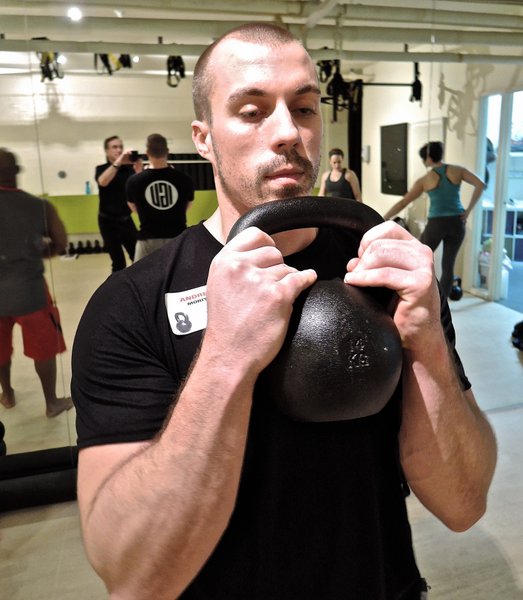
The First Twenty Days
Fresh from a new learning experience, there is always a tendency to want to do everything at once. But that approach is tough to do and fraught with long and short term issues. The first twenty days after the HKC experience should be a time to strive for mastering the movements and training the positions. Don’t add speed and volume to poor movements—take your time to practice.
These twenty workouts can be done five days a week (for a total of four weeks) or three days a week (sneaking up on two months) or any way you choose. These will provide the ground work for a solid base. Strive for mastery.
Daily Warm Up
It is generally a good idea to go through some mobility drills especially for these areas:
- Neck
- Shoulders
- Thoracic mobility
- Hips
Each week, take one day to do a full “toes to top” mobility workout.
It is recommended that you do the hip flexor stretch during each warm up and cool down period; it can be done very well with an easy set of goblet squats. Many find a few easy sets of swings, a few goblet squats and a weightless set of one to five get-ups on both sides to be enough of a warm up.
Day One
3 Get-ups right, 3 Get-ups left
Practice hip hinge
Goblet squats: 2-3-5-2-3-5-2-3-5
15 Two hand swings
1 Goblet squat
Ten reps of high knees “March in Place” (Each time the right foot hits is “one rep”)
Recovery breathing (up to two minutes)
Do this for a total of 3 rounds.
5 Minutes of pressing practice.
Day Two
2 Get-ups right, 2 Get-ups left
One hand press (Start with “less strong arm” and alternate arms. “One rep” is one arm right hand press and one arm left hand press)
1-2-3-1-2-3-1-2-3-1-2-3
Day Three
1 Get-up right, 1 Get-up left
30 Seconds of two hand swings/30 Seconds of “Fast-Loose” drills
20 minutes total time
Practice goblet squat
Day Four
10 Minutes of get-ups (alternate right and left)
15 Two hand swings
1 Goblet squat
10 Reps of high knees “march in place” (each time the right foot hits is “one rep”)
Recovery breathing (up to 2 minutes)
For a total of 3 rounds
Day Five
5 Get-ups right, 5 Get-ups left
One hand press (Start with “less strong arm” and alternate arms. “One rep” is one arm right hand press and one arm left hand press)
1-2-3-1-2-3-1-2
Day Six
3 Minutes of get-ups (alternate right and left)
30 Seconds of two hand swings/30 Seconds “Fast-Loose” drills
10 minutes total
Goblet squat: Several sets of 5 with a pause at the bottom
Day Seven
1 Get-up right, 1 Get-up left
One hand press (Start with “less strong arm” and alternate arms. “One rep” is one arm right hand press and one arm left hand press)
2-3-5-2-3-5-2-3-5
Day Eight
10 Minutes of get-ups
Practice hip hinge
Practice goblet squat
Practice press
Day Nine
15 Two hand swings
One goblet squat
10 Reps of high knees “march in place” (Each time the right foot hits is “one rep”)
Recovery breathing (up to 2 minutes)
For a total of 5 rounds
One hand press (Start with “less strong arm” and alternate arms. “One rep” is one arm right hand press and one arm left hand press)
1-2-3-1-2-3-1-2
Day Ten
5 Get-ups right, 5 Get-ups left
30 Seconds of two hand swings/30 Seconds “Fast-Loose” drills
5 Minutes total
Goblet squats
2-3-5-2-3-5
Day Eleven
5 Minutes of get-ups (Alternate right and left)
One hand press (Start with “less strong arm” and alternate arms. “One rep” is one arm right hand press and one arm left hand press)
1-2-3-5-1-2-3-5-3
15 Seconds of two hand swings/15 Seconds “Fast Loose” drills
10 Minutes total
Day Twelve
1 Get-up right, 1 Get-up left
30 Seconds of two hand swings/30 Seconds “Fast-Loose” drills
5 Minutes total
Goblet squats
1-2-3-1-2-3-1-2
One hand press (Start with “less strong arm” and alternate arms. “One rep” is one arm right hand press and one arm left hand press)
1-2-3-1-2-3-1-2
Day Thirteen
10 Minutes of get-ups (Alternate right and left)
15 Two hand swings
One goblet squat
10 Reps of high knees “march in place” (Each time the right foot hits is “one rep”)
Recovery breathing (up to 2 minutes)
For a total of 10 rounds
Day Fourteen
1 Get-up right, 1 Get-up left
One hand press (Start with “less strong arm” and alternate arms. “One rep” is one arm right hand press and one arm left hand press)
2-3-5-2-3-5-2-3-5
Day Fifteen
1 Get-up right, 1 Get-up left
30 Seconds of two hand swings/30 Seconds “Fast-Loose” drills
5 Minutes total
Goblet squats
1-2-3-1-2-3-1-2
One hand press (Start with “less strong arm” and alternate arms. “One rep” is one arm right hand press and one arm left hand press)
1-2-3-1-2-3-1-2
Day Sixteen
15 Two hand swings
5 Goblet squats
1 Push-up
10 Reps of high knees “march in place” (Each time the right foot hits is “one rep”)
Recovery breathing (up to 2 minutes)
For a total of 10 rounds
Day Seventeen
5 Minutes of get-ups (Alternate right and left)
One hand press (Start with “less strong arm” and alternate arms. “One rep” is one arm right hand press and one arm left hand press)
2-3-5-2-3-5-2-3-5
Day Eighteen
3 Get-ups right, 3 Get-ups left
30 Seconds of two hand swings/30 Seconds “Fast-Loose” drills
20 Minutes total
Day Nineteen
Goblet squats
5-10-5-10-5
One hand press (Start with “less strong arm” and alternate arms. “One rep” is one arm right hand press and one arm left hand press)
2-3-5-2-3-5-2-3-5
Day Twenty
1 Get-up right, 1 Get-up left
30 Second of two hand swings/30 Seconds “Fast-Loose” drills
5 Minutes total
Goblet squats
1-2-3-1-2-3-1-2
One hand press (Start with “less strong arm” and alternate arms. “One rep” is one arm right hand press and one arm left hand press)
1-2-3-1-2-3-1-2
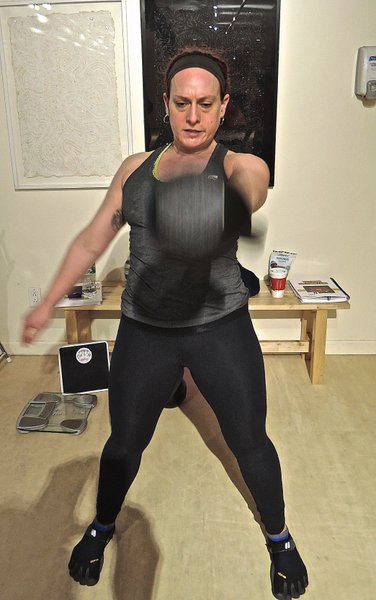
So, there you go! The HKC is more than just the entry into the kettlebell world. It is the foundation of everything you will learn. The three movements of the HKC are the core to conditioning, mobility and goal achievement.
Welcome aboard.
***
Master RKC, Dan John is the author of numerous fitness titles including the best selling Never Let Go and Easy Strength.
Dan has spent his life with one foot in the world of lifting and throwing, and the other foot in academia. An All-American discus thrower, Dan has also competed at the highest levels of Olympic lifting, Highland Games and the Weight Pentathlon, an event in which he holds the American record.
Dan spends his work life blending weekly workshops and lectures with full-time writing, and is also an online religious studies instructor for Columbia College of Missouri. As a Fulbright Scholar, he toured the Middle East exploring the foundations of religious education systems. For more information visit: http://danjohn.net
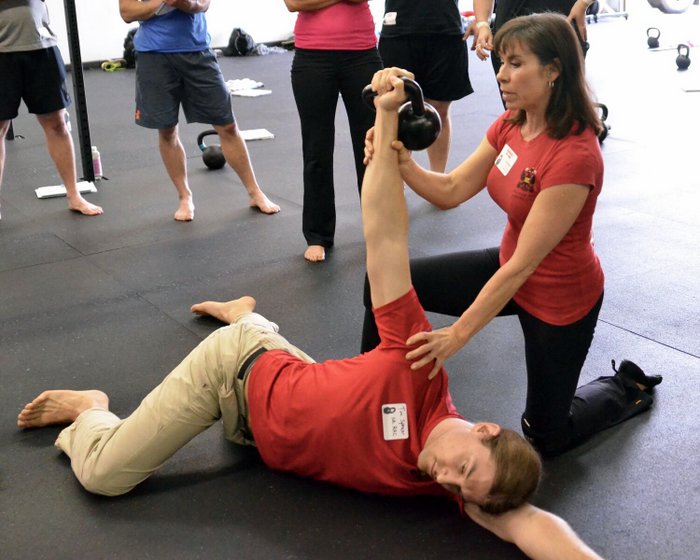
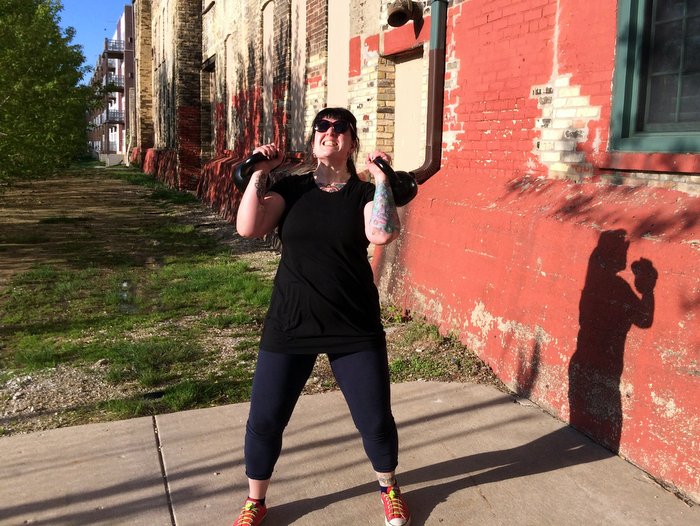



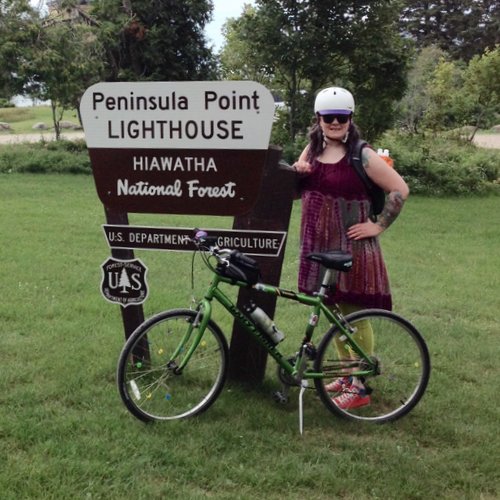
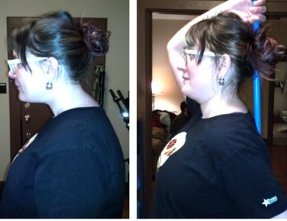
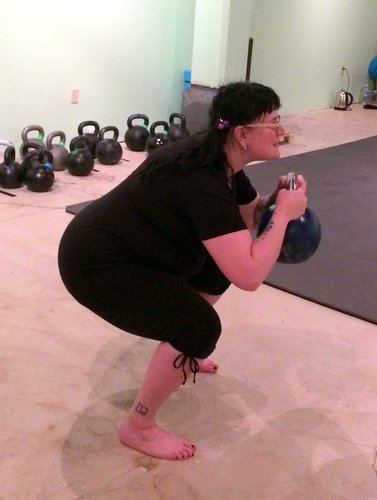


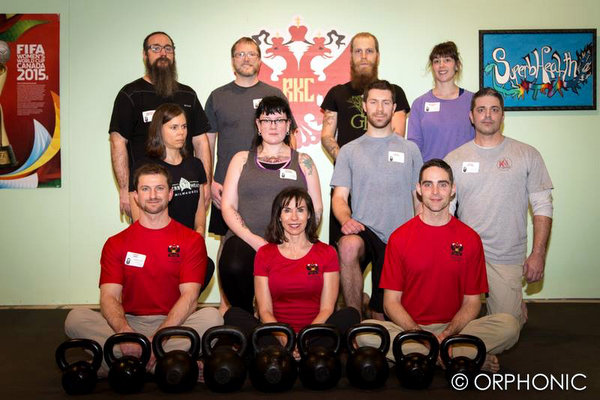

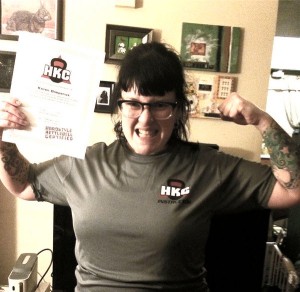
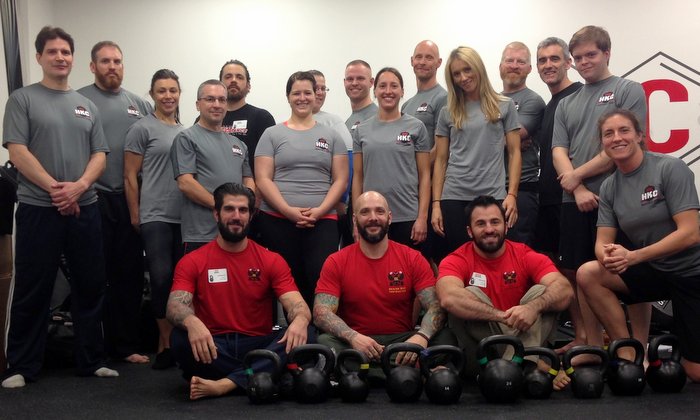
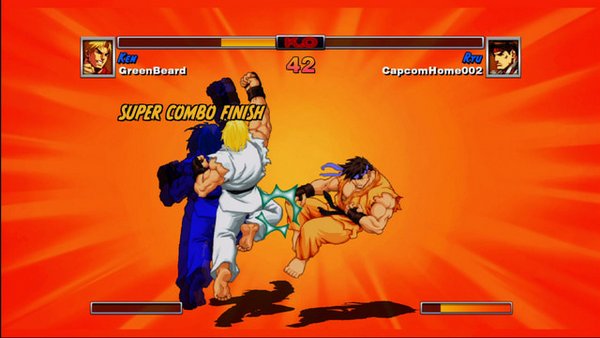
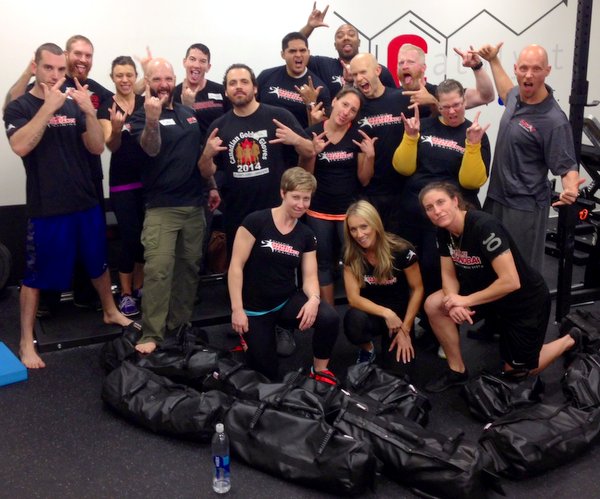
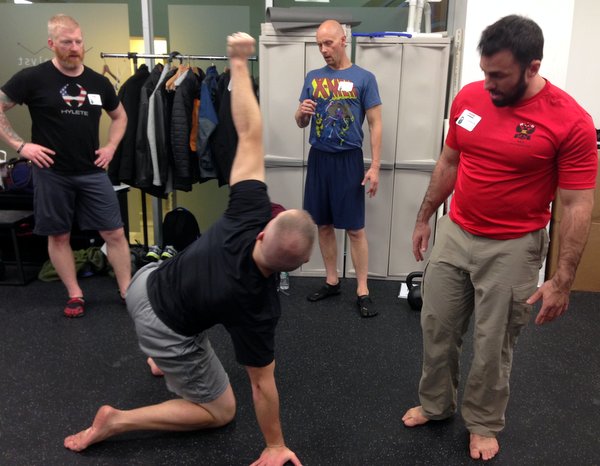
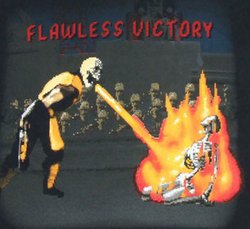 In a time when we are bombarded with fitness trends and certification chasing, it is easy to just “mash buttons” like you would on a video game controller. But, those button mashers usually don’t do too well in the long haul. The smart player, or strength coach, learns how the system works inside and out and then destroys his opponent. DVRT and HKC/RKC are for those that want to be the skilled player. That’s how you earn a flawless victory!
In a time when we are bombarded with fitness trends and certification chasing, it is easy to just “mash buttons” like you would on a video game controller. But, those button mashers usually don’t do too well in the long haul. The smart player, or strength coach, learns how the system works inside and out and then destroys his opponent. DVRT and HKC/RKC are for those that want to be the skilled player. That’s how you earn a flawless victory!